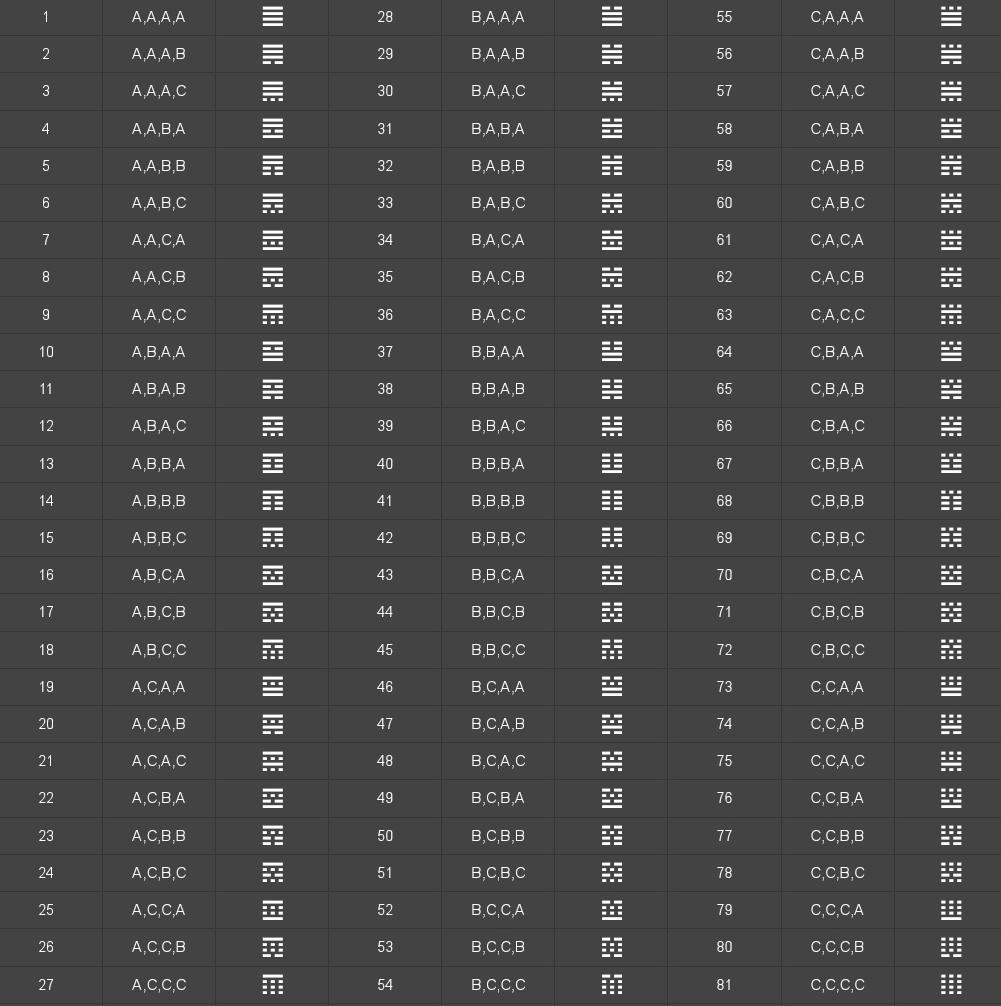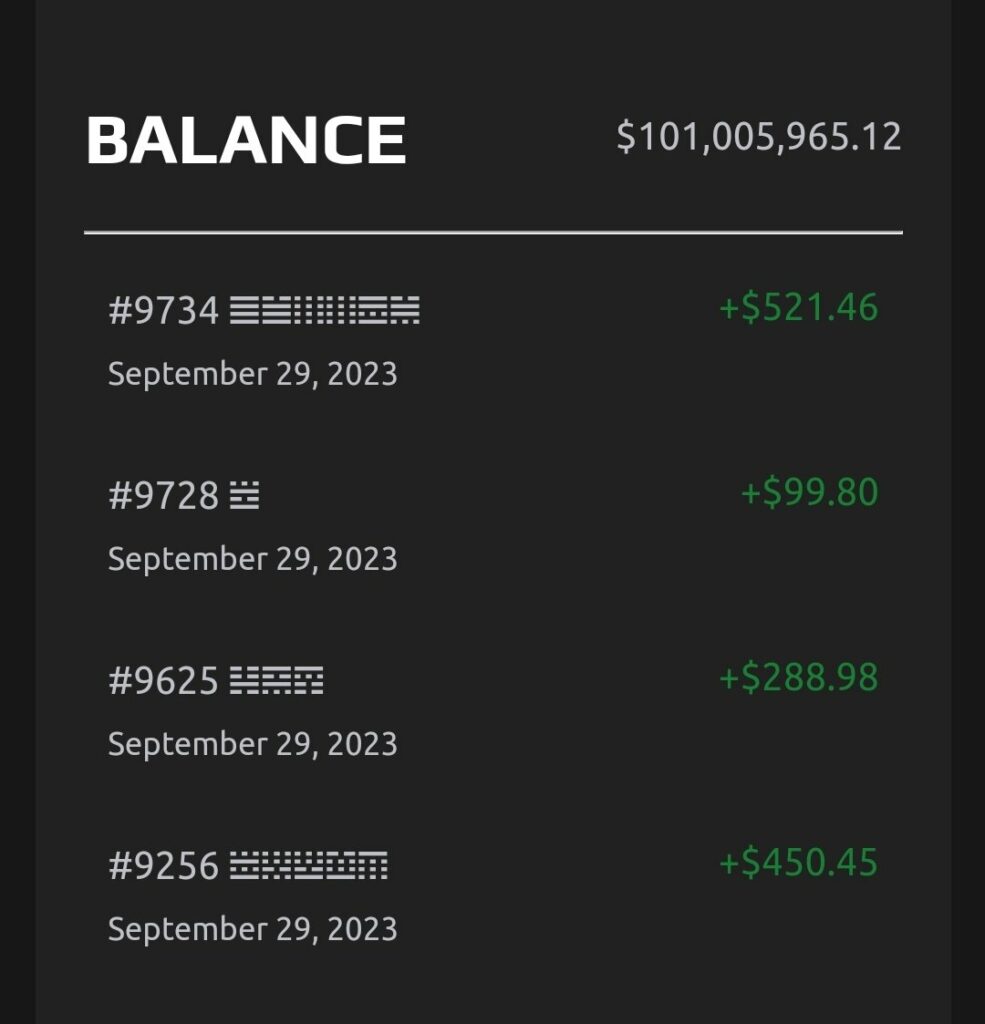If you are a fan of ancient texts and love to explore the mysteries of the past, get ready to be captivated by the fascinating world of the Canon of Supreme Mystery (Taixuanjing). This ancient Taoist text holds within it a treasure trove of knowledge, and one of its most intriguing aspects is the set of 81 Ternary Tetragrams.

The History of the Canon of Supreme Mystery
The Canon of Supreme Mystery, also known as Taixuanjing, is a Taoist scripture that dates back to ancient China. It was first attributed to Laozi, the legendary sage and founder of Taoism. The text has a rich history, and its origins can be traced back to the early centuries of the Common Era.
It was translated into English in 1993 by Michael Nylan.
The Canon of Supreme Mystery and it’s 81 Tetragrams are often said to correspond to the 81 verses of the Tao Te Ching.
Tao Te Ching translates very roughly as “the way of integrity”. In its 81 verses it delivers a treatise on how to live in the world with goodness and integrity: an important kind of wisdom in a world where many people believe such a thing to be impossible.
Over time, the Canon of Supreme Mystery gained significant importance in Taoist philosophy and practices. It delves deep into the principles of the universe, exploring the interactions between Heaven, Man, and Earth, and the fundamental forces that govern existence.
What is Ternary logic?
Ternary computing is a type of computing system that uses three possible states for each digit or memory cell, unlike the traditional binary system which uses two states (0 and 1). In a ternary system, these three states are often represented as -1, 0, and 1. This approach allows for potentially higher information density and more efficient processing since each digit can encode more information.
Ternary computing has the potential to perform certain types of calculations faster and with less power consumption compared to binary systems. However, building practical ternary computing hardware and designing algorithms that take advantage of ternary logic presents challenges that need to be addressed for its widespread adoption.
Discovering the 81 Ternary Tetragrams
The journey of discovering the 81 Ternary Tetragrams began with an investigation into the number 81. In ancient Chinese culture, the number 81 held great significance, believed to represent a complete and all-encompassing set of possibilities. It was considered the ideal number to represent the interactions between Heaven, Man, Earth, and the ever-changing dynamics of life.
In the Canon of Supreme Mystery, this fascination with the number 81 led to the creation of the Ternary Tetragrams. These four-character phrases are made up of four lines consisting of a solid line ⚊, a once broken line ⚋, or a twice broken line 𝌀. Each tetragram symbolizes a unique combination of elemental energies and holds a distinct meaning.
The combination calculator we used to generate all possible outcomes for our tournament bracket just happened to generate them in the original sort order they were put in 2000 years ago by Confucian writer Yang Xiong

The Marriage of Fundraising and Speculative Investing
Surprisingly, the 81 Ternary Tetragrams have practical applications in modern financial services. Their use has been explored in the context of merging charitable fundraising and speculative investing in a unique way.
We first came across them when we were nearing the end of building our tournament bracket template, when we realised we could summarize individual results. We began by generating all possible permutations of a set of 3 values with a sample size of 4 options, of which there are 81.
Coincidentally, 4 ternary digits gives 3 to the power of 4 = 81 possible combinations: −40 to +40
Imagine a single elimination tournament on the principles of Paper Scissors Rock, where your earnings increase based on the number of rounds you win.
We figured out that all possible moves for the game of Paper Scissors Rock emulate the logic of a base 3 Ternary system & the total number of moves in a best 2 out of 3 game is 81.
The Ternary Tetragrams serve as result codes for the games, where a solid line represents Player 1, a once broken line represents Player 2, and a broken twice line indicates a rematch.
When you enter a tournament on Favourable you are given a 9 digit entry code that is generated from a set of 27 options, who’s initial values are a placeholder for a 27 digit seed code generated once the fundraising goal is reached.
We then used a fancy calculator to generate the most logical order for all combinations of two 9 digit entry codes, which provided 36 combinations.
This means the tournament comprises of 36 games, divided into 4 sets of 9 games. The outcome of these 4 sets forms the Tetragram result codes, representing the performance of each participant.
In our tournament, 40 Tetragrams represent a win for Player 1, 40 Tetragrams represent a win for Player 2, while the 1 remaining Tetragram represents a draw/rematch.
Together they form a kind of barcode that provides a summary of interactions in the automated tournament that is displayed alongside your earnings in wallet.

It’s an innovative and captivating way to bring together crowdfunding and competitive gaming in a balanced and ethical manner.
The Power of 3

The number sequence 3, 9, 27, 81, 243 has been ingeniously utilized to create a potential self-correcting constitution for a unique crowdfunding platform that combines a tournament and fundraising. Each number in the sequence carries a distinct meaning, contributing to the platform’s intricate design.
The sequence starts with 3, representing the three choices available in the game: Paper, Scissors, and Rock. These choices form the foundation of the interactive aspect of the platform.
Moving to 9, which is derived from 3 times 3, it signifies the entry code participants receive when entering tournaments. This code serves as an essential entry point into the platform’s activities.
The subsequent number is 27, obtained by multiplying 9 by 3. This figure holds a dual role within the platform. Firstly, it reflects the diverse array of options available for entry codes, allowing participants a range of choices. Secondly, it represents the length of the seed code, a pivotal component in assigning values to entry codes within the platform’s tournament template.
Extending the sequence to 81, achieved by multiplying 27 by 3, this number takes on a specific significance. It corresponds to the number of Ternary Tetragrams used to convey detailed round results. In this context, 40 Tetragrams symbolize wins for Player 1, another 40 represent wins for Player 2, and the remaining Tetragram signifies a draw or rematch.
Concluding the sequence is 243, the result of multiplying 81 by 3. This number denotes the vast array of options for generating the seed code, a crucial factor in the platform’s functionality.
In essence, the sequence of numbers forms a robust framework that guides the mechanics of the crowdfunding platform. It intricately weaves together elements of the game, fundraising, choice, and results, creating a unique and engaging experience for participants while maintaining a self-correcting structure.
In Conclusion
The 81 Ternary Tetragrams from the Canon of Supreme Mystery are not only a testament to ancient wisdom but also a bridge between the past and the present, as they find applications in modern game design. Exploring the history of Taixuanjing and the significance of the number 81 brings us closer to understanding the profound connections between ancient philosophies and contemporary ideas.
So, if you’re intrigued by the mysteries of the past and the possibilities of the present, consider delving into the realm of the 81 Ternary Tetragrams. Discover the magic that emerges when ancient wisdom meets modern creativity, and experience the beauty of love and balance in the merging of charitable fundraising and speculative investing.
Very cool!